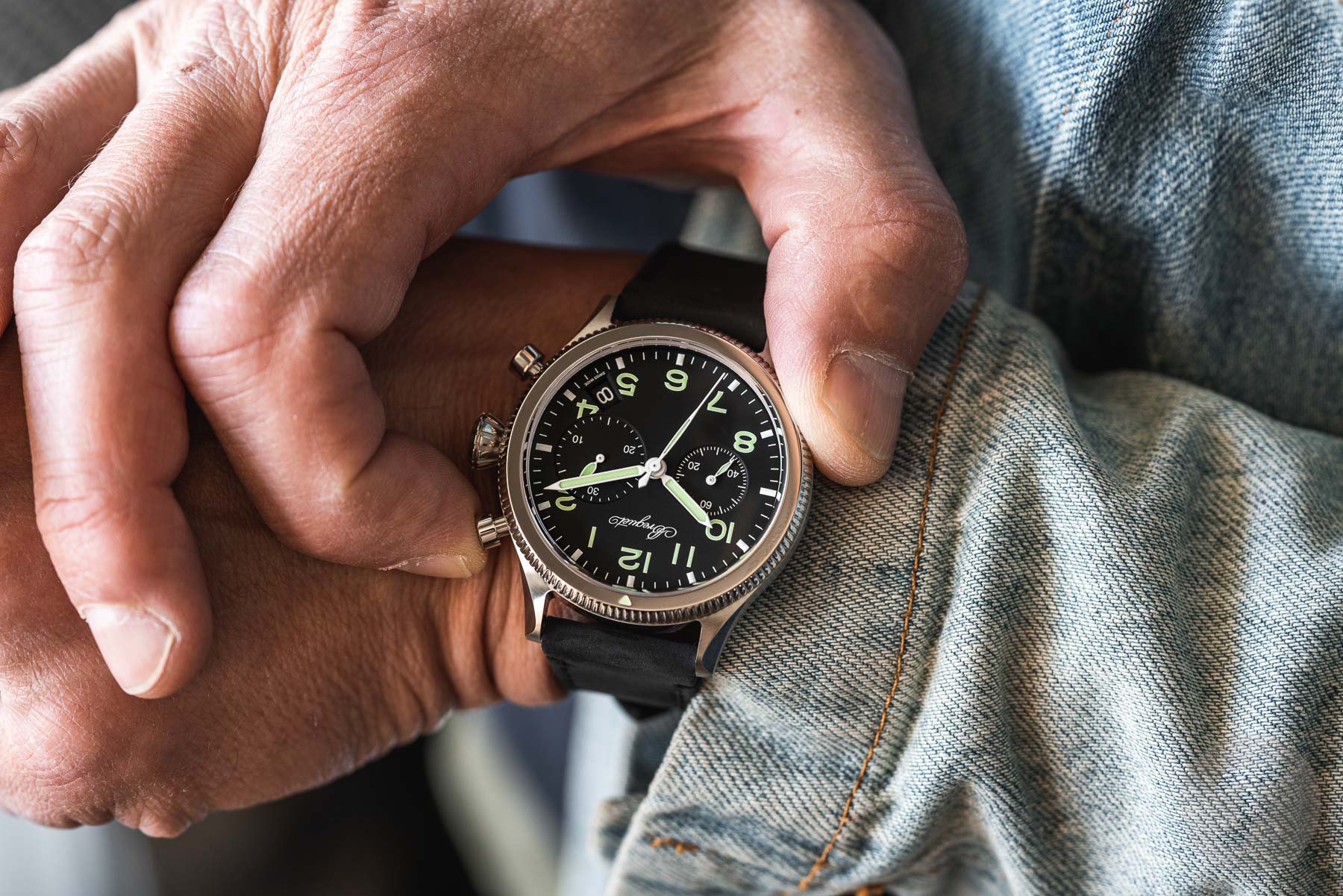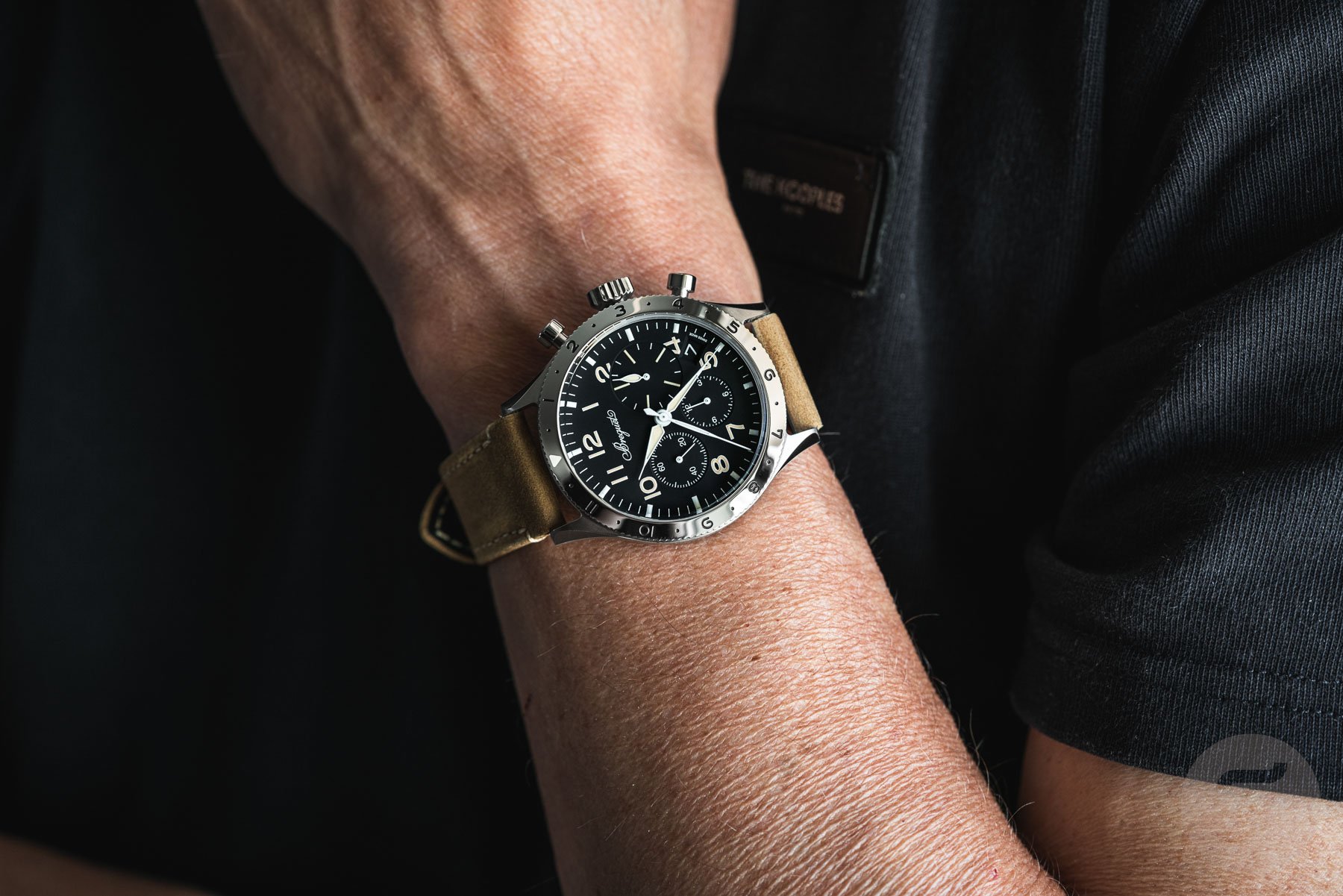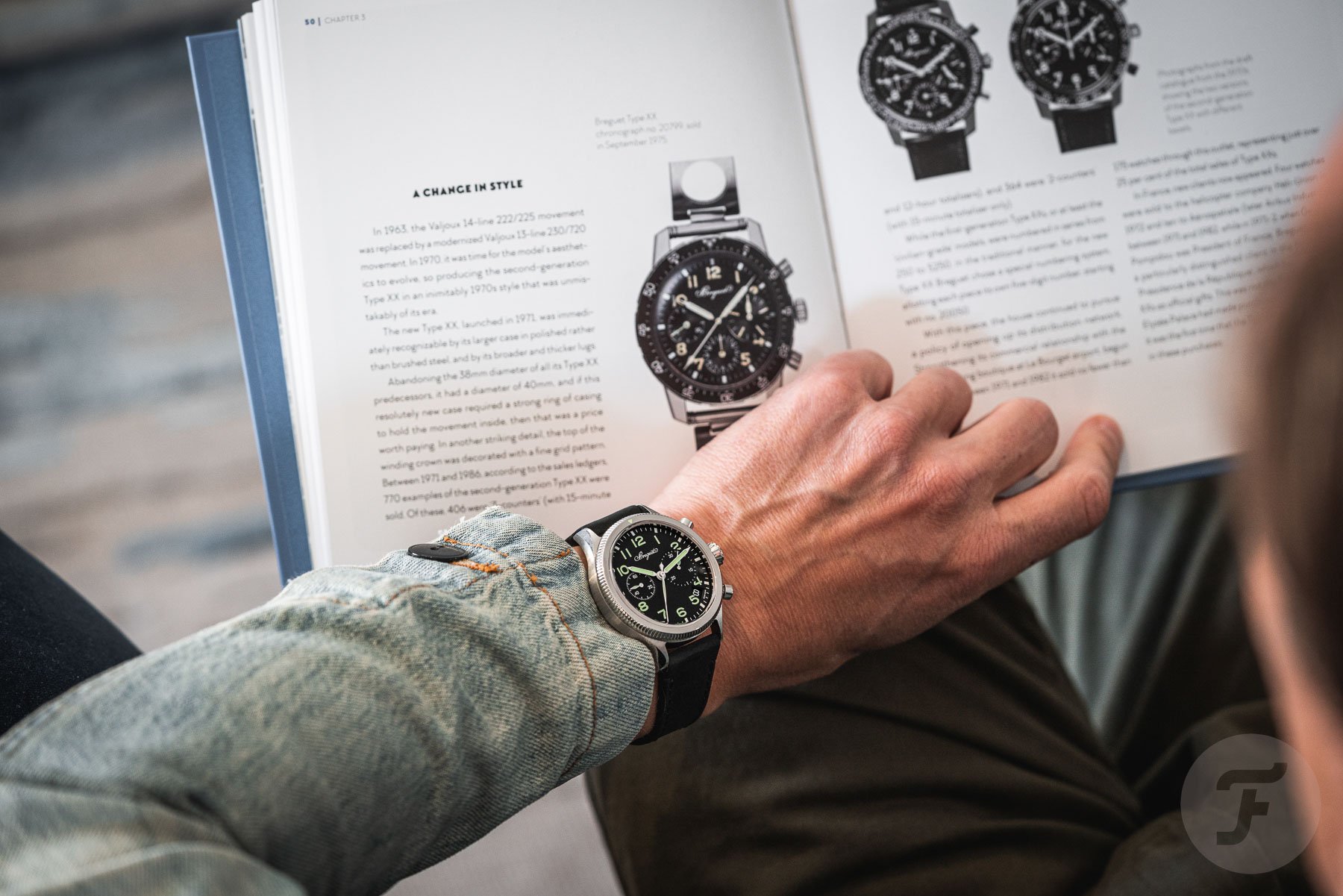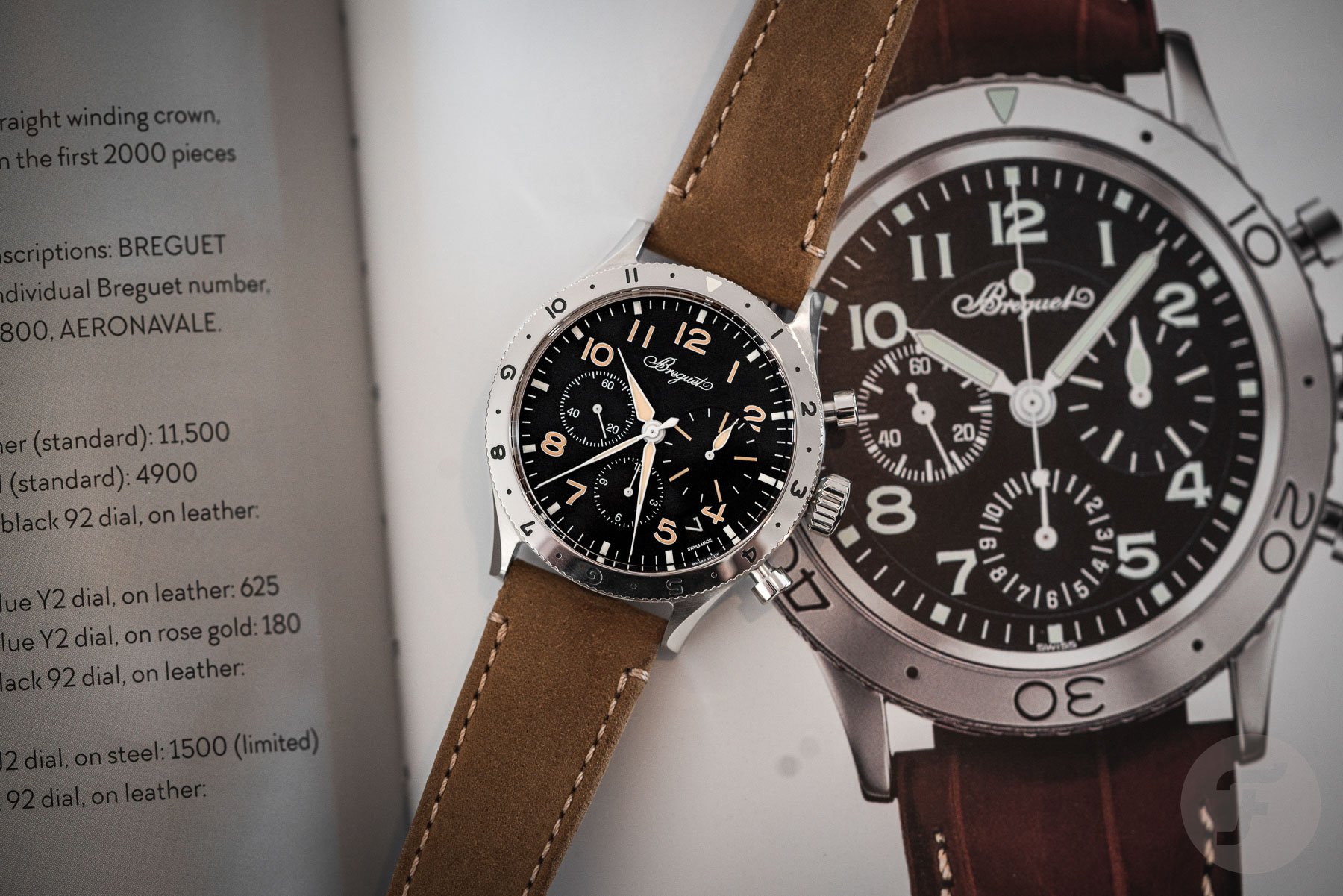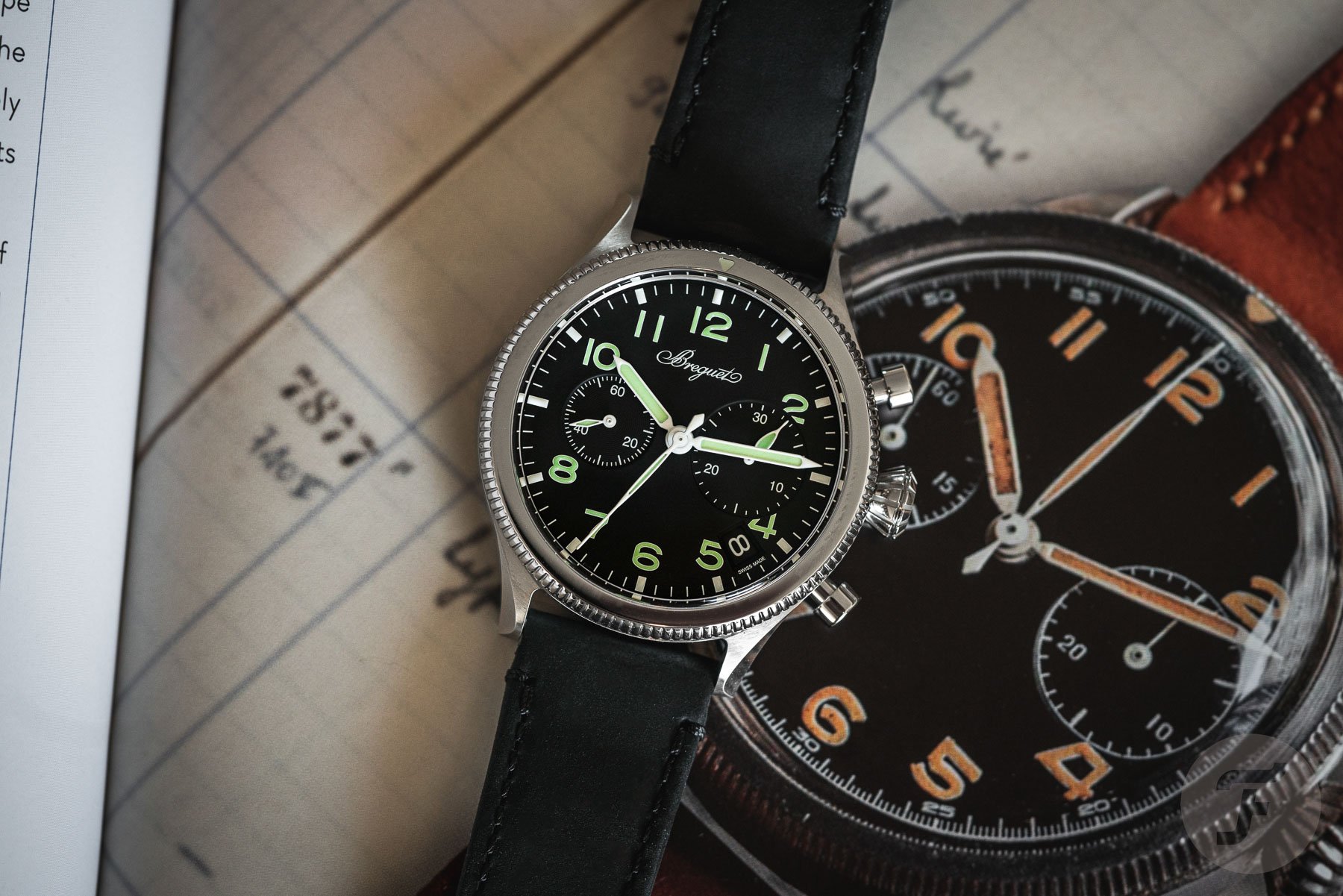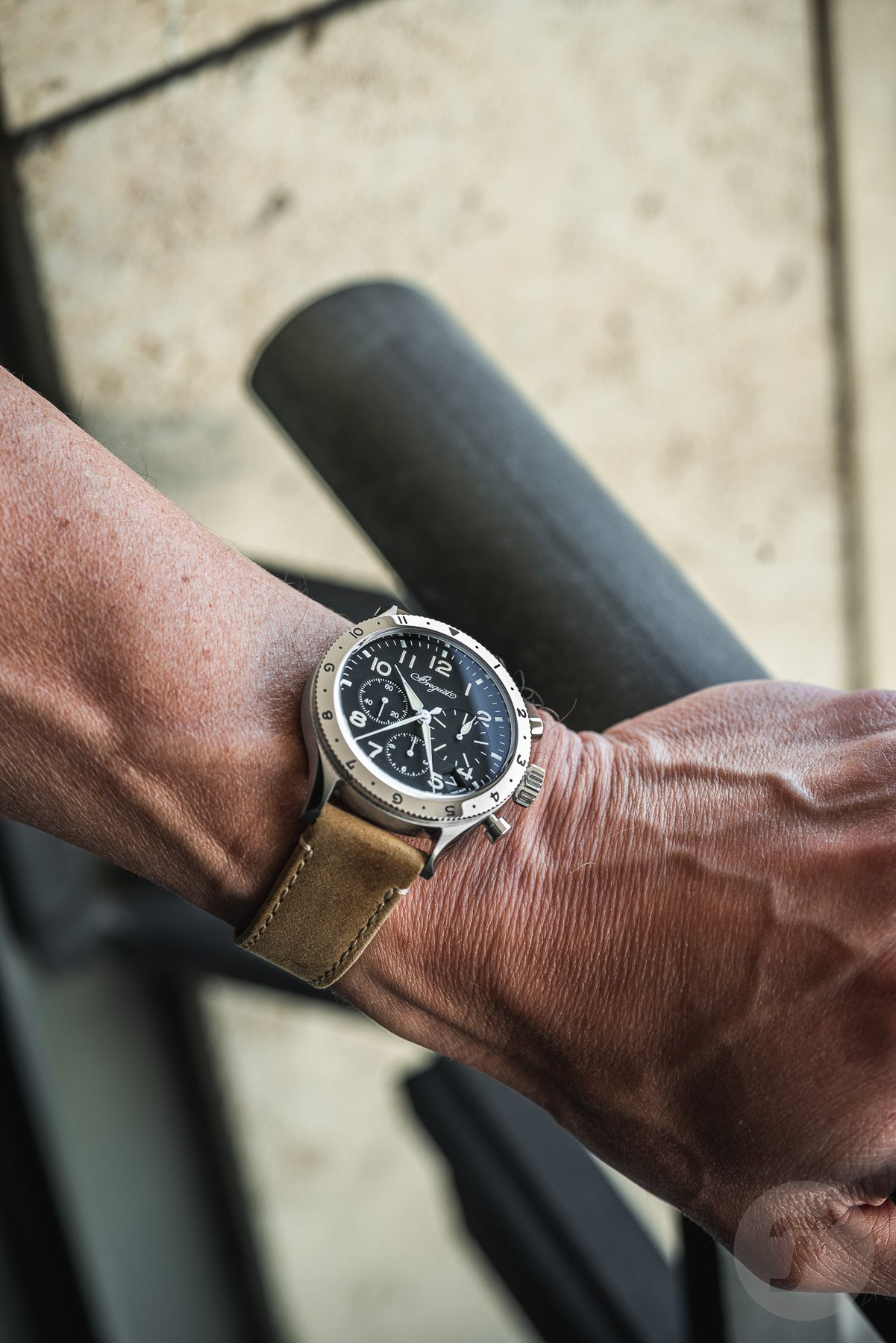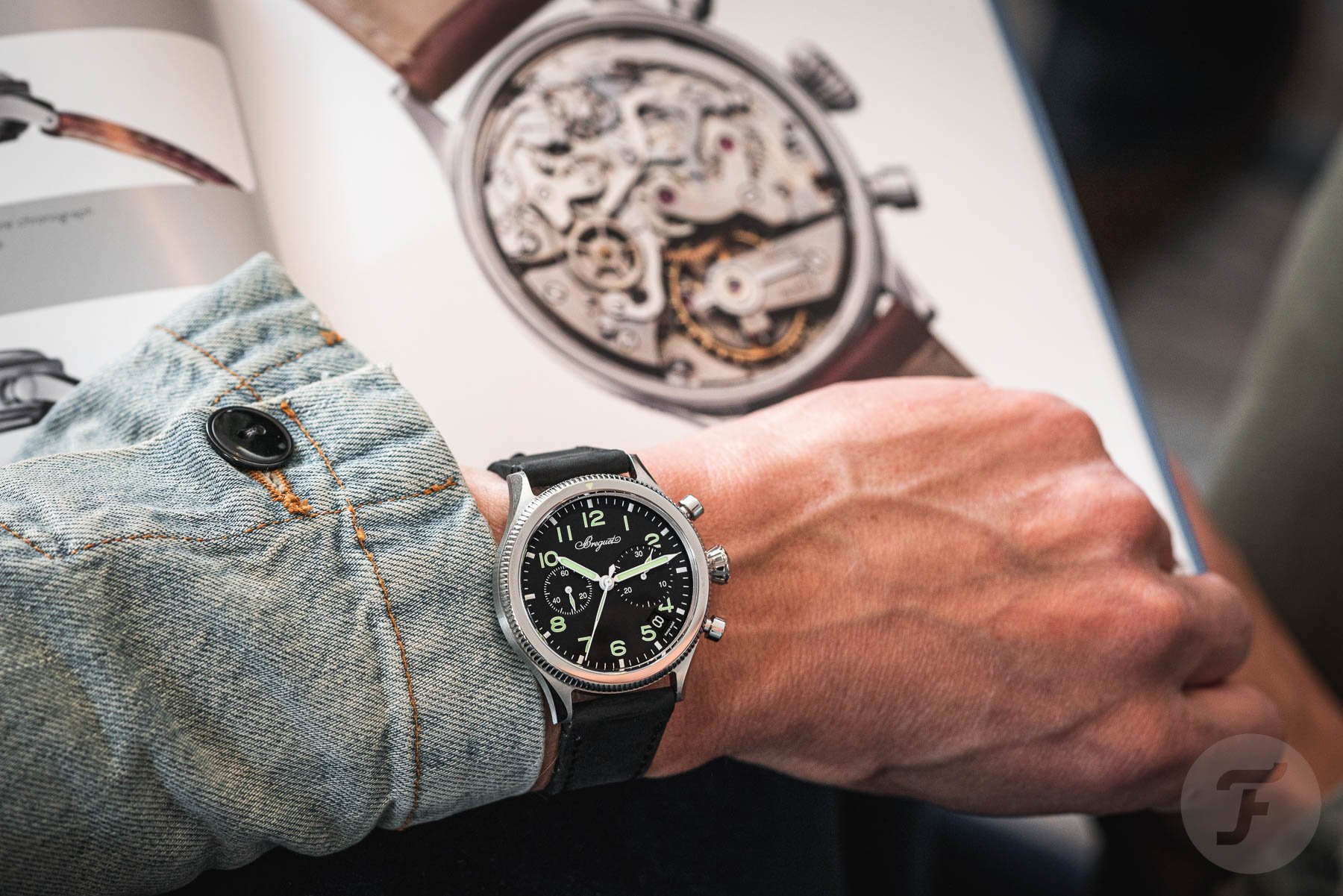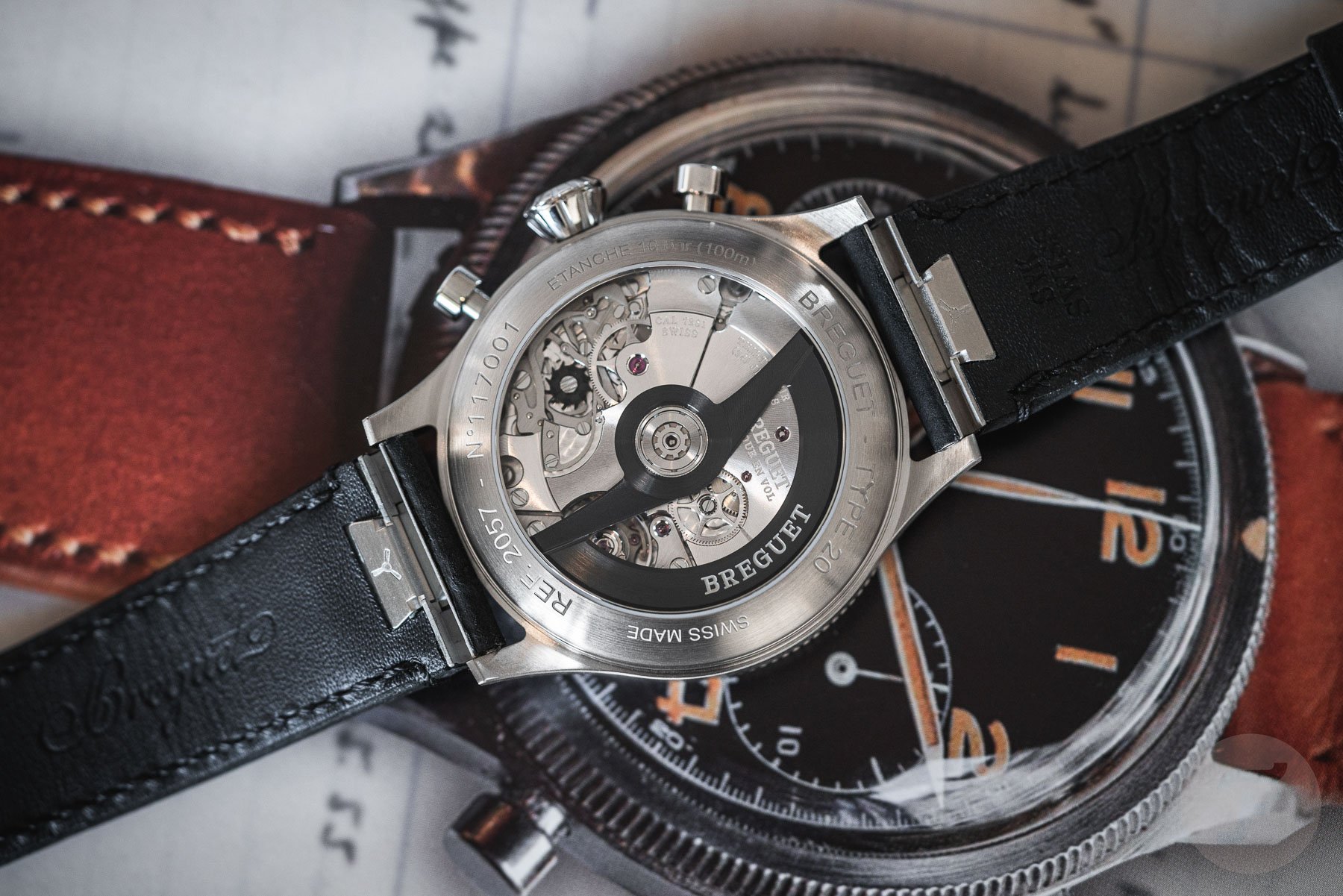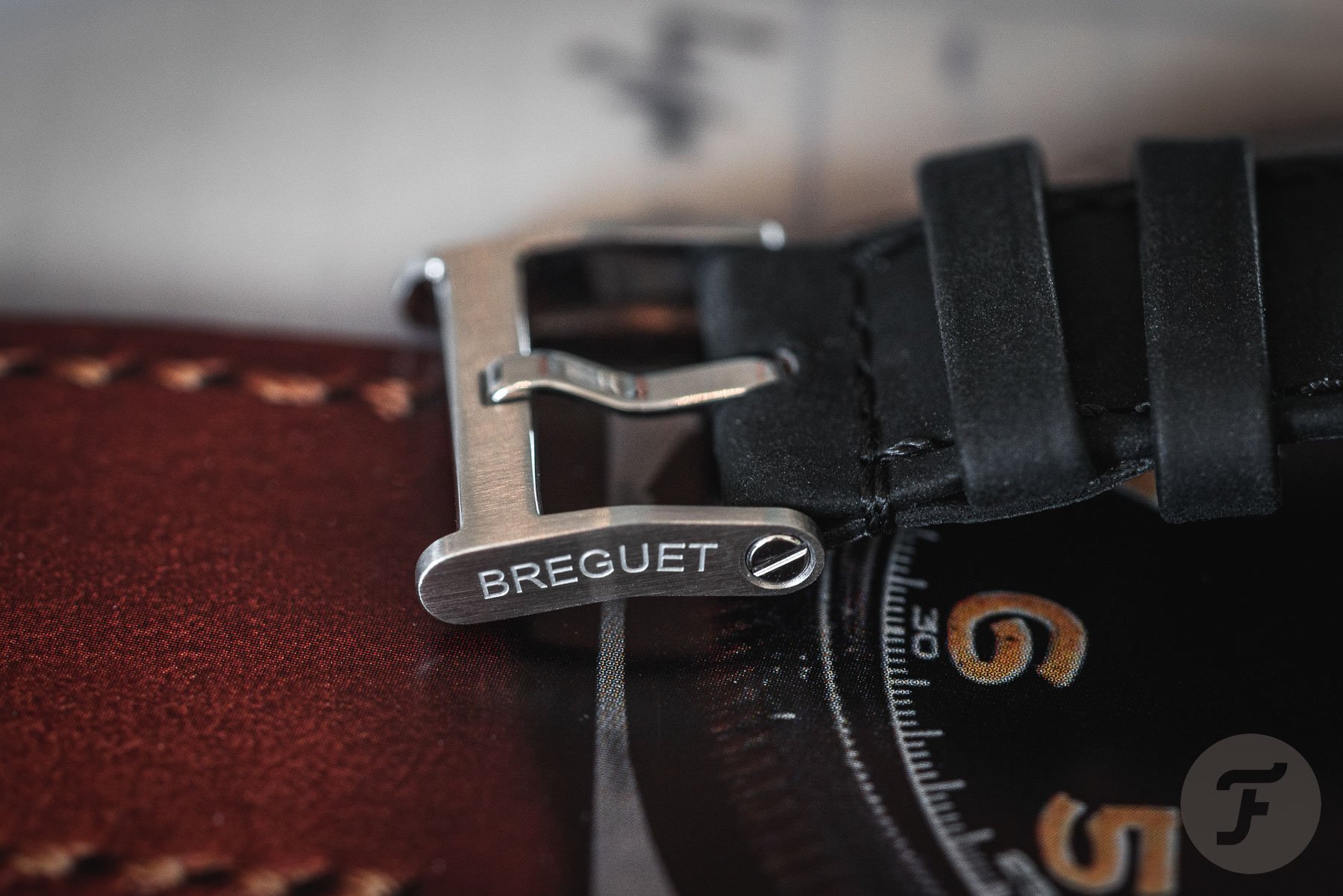My Two Cents On The New Breguet Type 20 And Type XX Watches: They Are Far Too Cheap
The Air and Space Museum is located within Paris-Le Bourget, Europe’s leading business airport, and it was the perfect venue for the introduction of the new Breguet Type 20 and Type XX watches. Two massive Ariane rockets, a gigantic Boeing 747 jumbo jet, and an even bigger Airbus A380 dominate the scenery. It’s inside the terminal building with its elegant Art Deco architecture that the worlds of Breguet watches and flying machines come together. But after walking past several Breguet creations and seeing the exhibition of three generations of military Type 20 and civilian Type XX and XXI timepieces, I saw that the fourth and latest generation was absent. I needed to be patient until much later that evening for the novelties to be unveiled. In the meantime, thoughts about what was, what is, and what’s to come flowed freely.
My first Breguet was an airplane, not a watch. As a kid, I loved nothing better than building military aircraft with Lego. When my dad would go to a secondhand bookstore to shop for material on merchant ships, I looked for books about combat aircraft. And when I found something that provided enough inspiration and clear enough pictures or drawings that would prove useful in my endeavor to replicate it in plastic bricks, I would try to persuade my dad to buy it for me. I recently found, by going through long-forgotten stuff in the attic, that he was very often willing to help me in my quest for building the perfect little airplane replica. One of the planes I once built was the Breguet Br.1150 Atlantic, a long-range maritime patrol and anti-submarine aircraft that was in service with the Royal Netherlands Navy from 1969 to 1985.
Pondering over the new Breguet Type 20 and Type XX watches
The Air and Space Museum is a Valhalla. Seeing all kinds of Mirages, a Rafale prototype, and not one but two Concorde supersonic passenger aircraft stirred feelings long forgotten. Seeing all those great airplanes in the metal made me look closely at the different details that revealed themselves in a way that’s impossible to experience from a book. It made me want to solve the problem of creating a flowing line with just the angular building blocks at my disposal. I could do it in the past because of the power of imagination but also because a Lego creation comes to life by connecting the different dots. In your brain, an imaginary line is formed, creating a miniature version of the real deal.
Once you get the “sketch” right, you have to tackle the second hurdle — details. Some you leave out, and others you can’t ignore because it’s those little things that are an essential part of the plane’s character. In the Great War Hall, I stood underneath a Breguet XIV A2, a two-seater multirole aircraft, and instinctively started thinking of how to recreate this WWI bomber and reconnaissance airplane out of Lego. It was the transparent part in the bottom of the fuselage through which the terrain below could be photographed that caught my attention. Later that night, the square window came back into my thoughts when I saw the date windows on the two new Breguet Type 20 and Type XX watches.
Don’t mention the date!
The very functional window in the military plane came to mind when seeing the date window on the watch. Both windows are functional. Aesthetics play no part in military functionality, but if it involves a watch with a military background that has transformed into a luxury product, they surely do. Without mentioning the date too much — most of it has already been said in the comments below RJ’s introduction article — it did have me wondering if removing the date would benefit the two watches. The short answer is “yes,” but only in the short term. The looks would improve because of more balance and less clutter on the dial. But would that make the €19,300 Type 20 and Type XX watches instant bestsellers and modern classics? That question I would answer with a “no,” and here’s why.
Not a watch
As I wrote earlier, my first Breguet was an airplane and not a watch. The Breguet Br.1150 Atlantic served with the Royal Netherlands Navy as a long-distance reconnaissance and submarine destroyer from 1969 to 1985. I liked the looks of it and, in particular, the Rolls-Royce Tyne 20 turboprop engine with four blades. The 39mm Type XX Transatlantique ref. 3820 and Aéronavale ref. 3800 appeared on my radar way later. And especially the Aéronavale — the version without a date window at 6 o’clock, housing the Lemania 1350-based automatic flyback chronograph caliber 582 — was in my sights for quite a while. The problem for me as a student was that, price-wise, “flying” that Breguet was impossible. Although it was an entry-level Breguet, the watch was still well above some of the aviation-inspired chronographs that eventually made it to my wrist.
With a price just below €20K, the new Type 20 and Type XX models are still out of reach. In my opinion, however, they should be much further out of my reach. The new Breguet Type 20 and Type XX watches should be priced at €60K. Some changes to the current two newcomers would be needed to justify that price, but I have some ideas.
The Type 20/XX deserves better
The most famous name in horology is (Abraham-Louis) Breguet, but Breguet is not the biggest brand in the watch world. The name and the brand are too far apart in terms of perception and brand awareness. The new Breguet Type 20 and Type XX watches got me thinking about how that could change, and so did the fact that these two chronographs will never be as famous as the Omega Speedmaster or the Rolex Daytona. And if you want a watch with the look of a Type 20/XX, several brands are offering similar chronographs. In the past, around seven manufacturers produced Type 20 watches for the French Ministry of Defense, and nowadays, brands like Longines, Auricoste, Dodane, Airain, and probably a few more build watches with the familiar Type 20 look. And the brands that produce these pilot’s chronographs have a list price that’s below the two Breguet creations.
By pricing the new chronographs just shy of €20K, the watches find themselves in some sort of no-man’s land. And the chronograph that makes a comeback on its 70th birthday deserves better. And when I say “better,” I mean in every single way, from the materials being used to the finishing of them.
Keeping up with the competition
To uplift the perception of Breguet, the brand could (and, in my opinion, should) have built an Haute Horlogerie version of the Type 20/XX. Patek Philippe explored its functional history and came out with watches like the €41,500 Calatrava Date 5226G. The watch in its white gold, complicated, Calatrava-type case rimmed with a hobnail guilloché pattern is both ultra-luxurious and fashionable. The retro vibe is strong because of the watch’s vintage-style anthracite dial. The slightly grainy texture that’s reminiscent of vintage cameras is very subtle and sophisticated. And if the three-hander is too simple for you, the more complicated Annual Calendar Travel Time 5326G comes into view. Just so you know, that’s an €81,100 watch. It’s not a chronograph, sure, but it shows that the style works with complicated watches too.
Setting a platinum example
The watch that got me thinking about the retro-functional Calatravas sat proudly in the Breguet exhibition in the museum. It was the Breguet Type XX Transatlantique 3827 in platinum with a salmon-colored dial from 1998. The ref. 3827 was a limited edition of 90 pieces, and because of its 39mm size and soft pink dial, it looked like it could have been made today. But no matter how precious the case material and the looks were, the caliber 582C inside that was visible through the exhibition case back looked anything but prestigious. It’s the same self-winding caliber with a flyback chronograph based on the Lemania 1350 that’s in the other Type XX watches of that era.
In the new Type 20/XX watches, you will find much more advanced 5Hz movements that took about four years to develop. The self-winding calibers 728 and 7281 are high-beat calibers ticking at 36,000vph (5Hz) that feature a column wheel and several silicon parts (hairspring, escape wheel, and pallet-lever horns) and have a power reserve of 60 hours. They’re great flyback chronograph movements, no doubt, but they’re not Haute Horlogerie calibers. They’re nothing like the hand-wound caliber L951.0 you will find in the A. Lange & Söhne 1815 Chronograph. That watch has a price of around €70K, and that price has never stopped affluent watch connoisseurs from buying the watch.
Valjoux 22 evolution
The new Breguet Type 20 (ref. 2057) and Breguet Type XX (ref. 2067) both have a 42 × 14.1mm case in steel. What if those had been more or less the same dimensions as the first-generation Lange 1815 Chronograph (39.5 × 10.8mm) and had come in white gold instead of steel?
And what if the movements inside the military and civilian rebirths of the famous chronograph were an updated, reworked, perfected Valjoux 22 movement without the date? The Type 20 came to life with a hand-wound caliber 222 inside, and that was a modified Valjoux 22 chronograph movement. The Valjoux 22 originates from 1914. It started as a monopusher chronograph movement and got an update to dual pushers in the 1930s. The movement got an upgrade in 1947 and was in production until 1966. Why not take an old caliber apart, analyze it, reshape the teeth of the wheels, upgrade the materials used, finish it to the highest standards possible, and get it certified as a chronometer?
Premium pricing
The price positioning and production numbers are also something to think about. Premium pricing can create premium attention and desirability, and having a limited supply is also alluring. With that in mind, the two new high-end chronographs could initially have an limited annual production of 70 pieces. That’s because these watches celebrate the 70th birthday of Breguet’s aviation chronograph, of course. And the 2023 batch could have a small commemorative engraving on the case back. That would be, of course, to distinguish them for the 2024 batch, which would also be made in low quantities but higher than 70 to satisfy the now-eager potential clients.
The last thing to do now is to come up with a premium price for these premium pilot’s chronographs. I think €70K would be very symbolic but maybe a bit too symbolic and, therefore, too on the nose. The price of the hand-wound Patek Philippe 5172G chronograph is around €80K. If Breguet priced the white gold Type 20/XX around €60K, it would be both aggressive and premium at the same time. That could well be a win-win situation, wouldn’t you agree? Please leave a comment, and do just like me: don’t mention the date!
Please follow me at Lex Stolk • Instagram.

